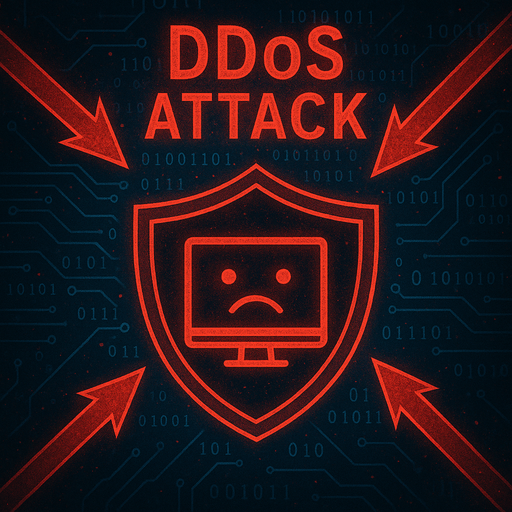DDoS attacks pose a serious threat to modern web resources. In this article, we'll explore what a DDoS attack is, what types of attacks exist, how to determine if your site is under attack, and what protective measures you can take.

G. Ostrov
What is a DDoS Attack?
DDoS (Distributed Denial of Service) is an attack where multiple computers infected with malware simultaneously send requests to a target server, causing it to overload and become unavailable to legitimate users.
Main Types of DDoS Attacks
There are several types of DDoS attacks:
- Volumetric attacks — aimed at overwhelming the data transmission channel with a huge number of packets.
- Protocol attacks — target vulnerabilities in data transmission protocols (TCP, UDP, ICMP).
- Application layer attacks — attacks on vulnerabilities in web servers and applications.
Signs of a DDoS Attack
You can determine if your resource is under a DDoS attack by the following signs:
- Sudden slowdown of the website or complete unavailability
- Unusually high traffic from a single source or region
- Multiple requests with similar characteristics
- Abnormal activity at specific times
How to Protect Against DDoS Attacks
To protect against DDoS attacks, a comprehensive approach is recommended:
1. Increase Bandwidth Capacity
The greater your server's bandwidth capacity, the harder it is to overwhelm it with traffic. Using a CDN (Content Delivery Network) distributes the load across multiple servers.
2. Use Specialized Protection Services
There are special services that filter traffic and block potentially dangerous requests, allowing only legitimate traffic through.
3. Configure Firewalls
A properly configured firewall can filter malicious traffic by blocking suspicious IP addresses or anomalous requests.
4. Develop a Response Plan
It's important to have a ready action plan in case of an attack: who is responsible for responding, what measures are taken first, how to restore operation after an attack.
Preventive Measures
To minimize the risk of DDoS attacks, it is recommended to:
- Regularly update software and address vulnerabilities
- Monitor network traffic to detect anomalies in a timely manner
- Use various authentication mechanisms to protect administrative interfaces
- Train personnel in cybersecurity basics
Conclusion
DDoS attacks are becoming increasingly common and sophisticated. Proper preparation and a comprehensive approach to security will help minimize risks and quickly restore operations in case of an attack. It's important to understand that completely eliminating the possibility of a DDoS attack is impossible, but you can significantly reduce the likelihood of a successful attack and minimize potential damage.
For more detailed information on DDoS attacks and protection methods, you can visit the official website of the Cybersecurity and Infrastructure Security Agency (CISA).
If you have any problems, write to us, we will help you quickly and professionally!




